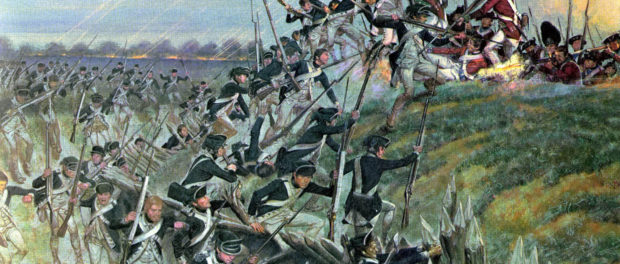1781: The Canadians at Yorktown & Other Quebec Curios
Part of “A Colony in Transition, 1763-1791”
During the American Revolution, the Revolutionaries managed to get not one but two Canadian Regiments in their grasp. The first Regiment participated in the successful capture of the British-occupied Fort Chambly in 1775 and the not-so-successful 1775 Battle of Quebec that same year. Both successful and unsuccessful events happened in the same context: the relative failure of the Invasion of Quebec, where the Americans-to-be tried to take over Quebec. Following the failure of the Battle of Quebec, in order to regroup, a man named Moses Hazen collected the second Regiment.
Hazen was a former military man who had seen the events of the Seven Years’ War, including the 1760 Battle of Quebec (Ste-Foy), where he got the military man’s stamp of approval by James Murray. Settling down with a woman from Montreal to retire into farming, he remained loyal to the British cause, even reporting to none other than Guy Carleton about Benedict Arnold’s capture of Fort Ticonderoga. However, he became a Revolutionary after the very same British people he had fought alongside with and supported put him in jail and used his land and house as they pleased. Jaded by his experience, he participated in the Battle of Quebec as a Revolutionary man, often clashing with Benedict Arnold over administrative matters. In the year following the Invasion of Quebec, while still stationed in Hazen would gather more unhappy French Canadians and their friends to form the 2nd Canadian Regiment; the Continental Congress would authorise them in early 1776 and would have initially four battalions. Though they were named the “Canadian” Regiment, they would be composed of German prisoners of war and immigrants, though some Canadians still followed the Regiment around.
The Siege of Yorktown was the last major battle of the American Revolution. Occurring in the eponymous town of Yorktown, the Revolutionaries, led by George Washington and his French ally, the Compte de Rochambeau, defeated British commander Lord Cornwallis. Initially, the 2nd Canadian Regiment was used as a shill to trick the British into thinking they were going to launch an attack in New York, while Washington marched the rest of the army towards Yorktown. With their mission completed, the two hundred men that formed the Regiment joined Washington in the siege with supplies in tow. General Washington would refuse to grant safe passage to the Loyalists as part of the terms of surrender during the siege. The British defeat at Yorktown would commence the embittered negotiations between the Revolutionaries and the British that would be consecrated in the Treaty of Paris.
The 2nd Canadian Regiment would barely survive after the Revolution. They would disband in 1783 and be relocated to other regiments. Hazen, on the other hand, would survive the Revolution and would retire in New York, having received a land grant as part of his loyalty to the Revolutionary cause. Unfortunately, doctors would declare him of “unsound mind” towards the end of his life due to multiple arrests for debt and frivolous lawsuits against other people. His wife, Charlotte, who had stood by him until his demise in 1803, would herself pass on in 1827.






